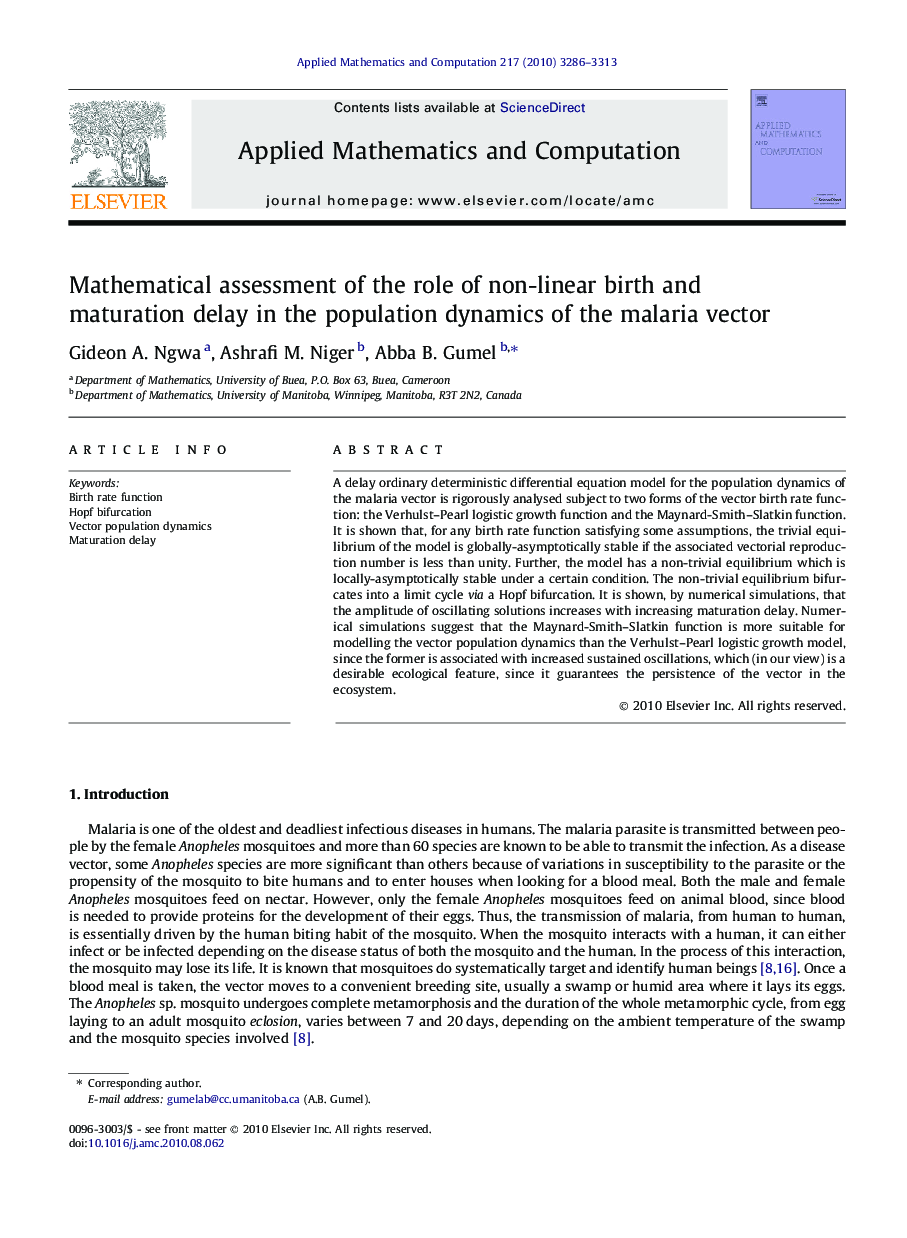| Article ID | Journal | Published Year | Pages | File Type |
|---|---|---|---|---|
| 4631228 | Applied Mathematics and Computation | 2010 | 28 Pages |
A delay ordinary deterministic differential equation model for the population dynamics of the malaria vector is rigorously analysed subject to two forms of the vector birth rate function: the Verhulst–Pearl logistic growth function and the Maynard-Smith–Slatkin function. It is shown that, for any birth rate function satisfying some assumptions, the trivial equilibrium of the model is globally-asymptotically stable if the associated vectorial reproduction number is less than unity. Further, the model has a non-trivial equilibrium which is locally-asymptotically stable under a certain condition. The non-trivial equilibrium bifurcates into a limit cycle via a Hopf bifurcation. It is shown, by numerical simulations, that the amplitude of oscillating solutions increases with increasing maturation delay. Numerical simulations suggest that the Maynard-Smith–Slatkin function is more suitable for modelling the vector population dynamics than the Verhulst–Pearl logistic growth model, since the former is associated with increased sustained oscillations, which (in our view) is a desirable ecological feature, since it guarantees the persistence of the vector in the ecosystem.
